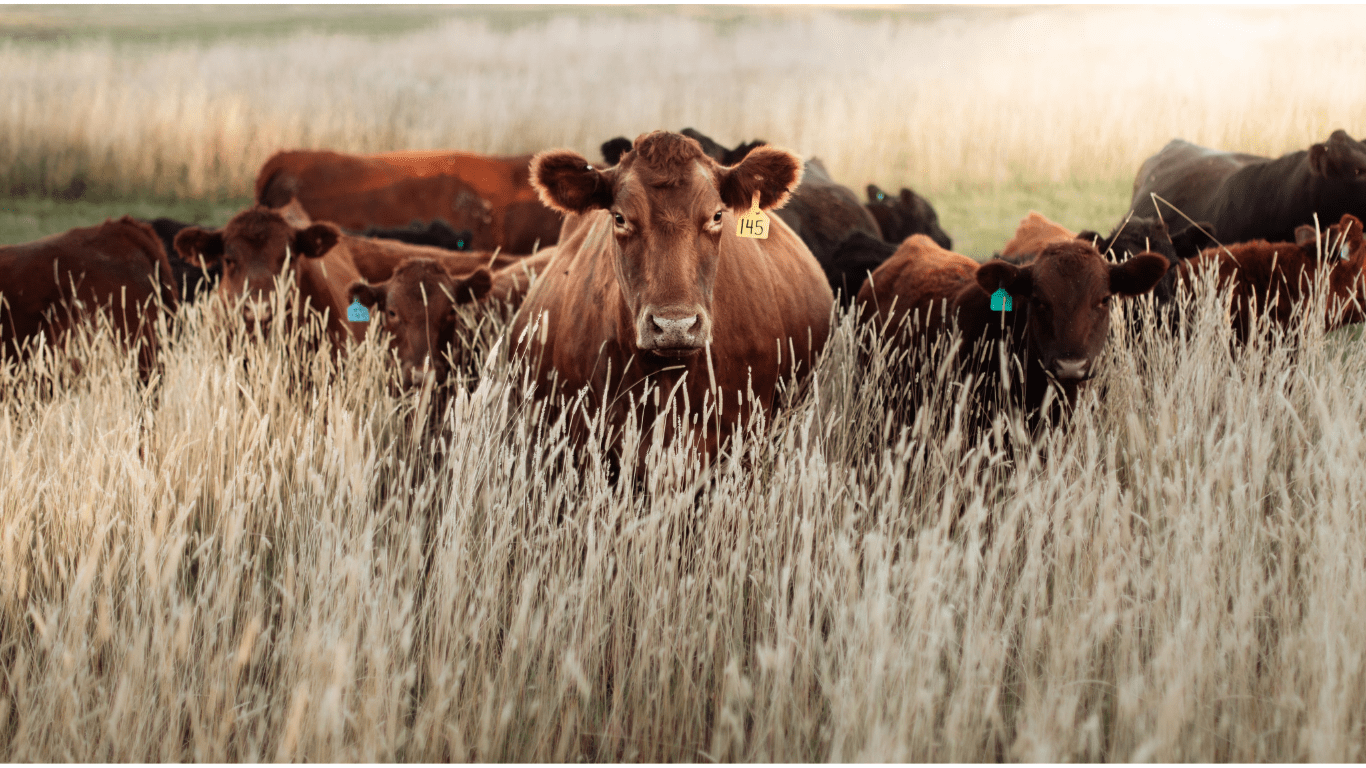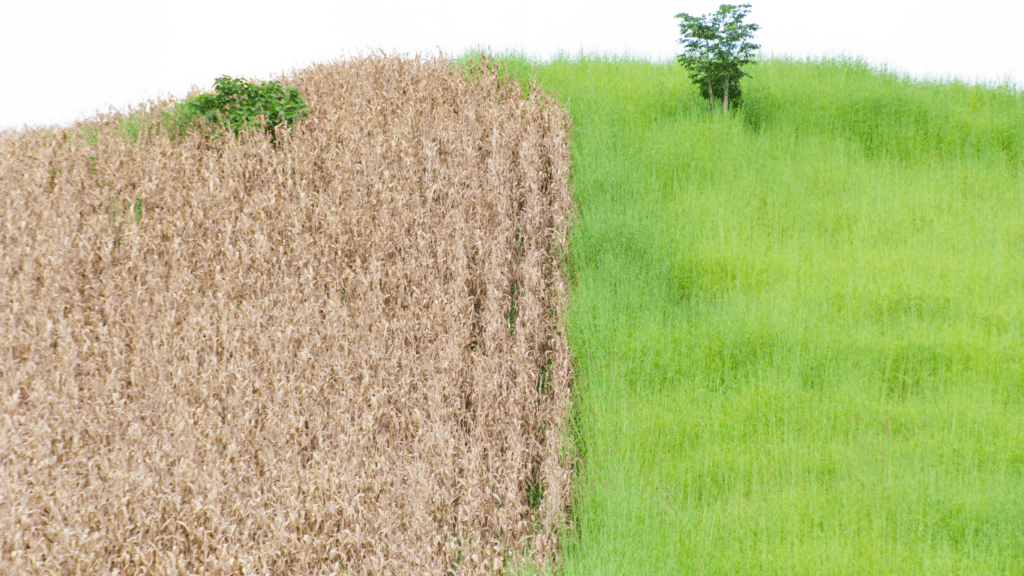Overview of Climate Change and Agriculture
Climate change directly alters the conditions under which crops grow, impacting global agriculture. Rising temperatures shift growing seasons and modify precipitation patterns.
Crops like wheat, for example, face heat stress in critical growth stages, reducing yields. Additionally, increased CO2 levels affect crop nutrient content.
Water availability, another crucial factor, is also affected. Global agriculture relies heavily on consistent water supply. Yet, climate change brings about irregular rainfall and prolonged droughts. The unpredictability of water resources stresses irrigation systems and affects crop productivity.
New pests and diseases thrive in warmer climates, posing another challenge. Pests like the fall armyworm, previously restricted by cooler temperatures, now spread across new regions, damaging crops. Farmers must manage these threats, often with resources stretched thin.
The shifting agricultural landscape endangers global food security. Crops fail more frequently, prices increase, and vulnerable populations face higher risks of hunger. Additionally, the livelihoods of farmers, who rely on stable conditions, are disrupted, impacting economies worldwide.
Livestock production isn’t immune either. Higher temperatures can cause heat stress in animals, reducing milk and meat production. Furthermore, forage quality diminishes, directly affecting feed availability.
Adaptation strategies are vital. Farmers adopt new methods such as drought-resistant crop varieties and enhanced irrigation practices. These changes, though necessary, involve significant investments and alterations in traditional farming practices, challenging the stability of global agriculture in the face of climate change.
Shifting Weather Patterns
Changing weather patterns drastically affect agricultural productivity across the globe. They alter growing seasons and influence crop yield and quality.
Temperature Variations
Global temperatures continue to rise, making extreme heat more frequent. Crops sensitive to heat, like wheat, face reduced yields. Temperature shifts alter planting and harvesting schedules, forcing farmers to adapt. Livestock, too, suffers from heat stress which decreases milk and meat production.
Changes in Precipitation
Fluctuations in precipitation patterns disrupt water availability. Regions experiencing less rain face drought, stressing water resources essential for irrigation. Conversely, areas with excessive rainfall deal with flooding issues, damaging crops and soil integrity. These changes necessitate the adoption of water-efficient practices and advanced irrigation techniques.
Impact on Crop Yields
Shifts in climate patterns affect crop yields significantly. Rising temperatures, altered precipitation, and elevated CO2 levels create unpredictable growing conditions.
Staple Crops
Staple crops like wheat, rice, and corn face diverse challenges. According to the Intergovernmental Panel on Climate Change (IPCC), global wheat yields could drop by up to 6% for every degree Celsius increase in temperature.
Rice production, relying on consistent water availability, suffers from irregular rainfall and increased droughts. Corn, sensitive to heat, shows yield reductions when temperatures exceed 30°C (86°F) during critical growth stages.
Specialty Crops
Specialty crops, including:
- fruits
- vegetables
- nuts
are equally affected. Grapes for wine production face quality issues due to heat stress. Apples and cherries, requiring chill periods, produce lower yields in warmer winters. Almonds and avocados show reduced yields due to water scarcity and higher temperatures, impacting both quantity and quality.
Effects on Livestock

Climate change significantly impacts livestock, affecting growth, productivity, and health.
Heat Stress
Heat stress in livestock lowers productivity. Animals like cows and pigs struggle with high temperatures, leading to decreased milk production and slower weight gain. Studies show that heat stress can reduce dairy cow milk yield by up to 20% in some regions. Poultry also faces challenges, with higher mortality rates in hotter climates.
Water Availability
Water availability directly affects livestock. Droughts and irregular rainfall reduce access to drinking water and degrade forage quality. In arid regions, livestock numbers can decline due to insufficient water. This scarcity forces producers to manage water resources carefully, often resorting to supplemental feeding to maintain herd health.
Economic Consequences for Farmers
Climate change impacts farmers’ finances worldwide in significant ways, creating economic hardships that affect entire agricultural communities.
Increased Costs
Adapting to climate change results in rising operational costs. Farming in unpredictable weather conditions necessitates investment in advanced irrigation systems, drought-resistant seeds, and pest control measures.
For example, in California, farmers spend millions annually on water-efficient technologies due to prolonged droughts. Higher temperatures also force additional spending on cooling systems for livestock, increasing overhead expenses. Immediate expenses compound over time, reducing profit margins.
Market Volatility
Market volatility becomes more pronounced as climate change affects crop yields. Unpredictable weather patterns lead to inconsistent harvests, causing fluctuations in supply. In 2020, for instance, the US experienced significant corn yield reductions due to extreme weather, resulting in price hikes.
Such variability disrupts market stability, making it difficult for farmers to forecast revenue accurately. When supply dips, prices soar, straining consumers and producers alike. Conversely, unseasonal overproduction can drive down prices, reducing farmers’ income.
Climate change undeniably reshapes the agricultural economy, straining farmers and destabilizing food markets.
Adaptation and Mitigation Strategies
Addressing the impacts of climate change on global agriculture requires adopting adaptation and mitigation strategies. Farmers can employ several methods to ensure sustainable practices and technological innovations to mitigate these effects.
Sustainable Farming Practices
Sustainable farming practices reduce the negative effects of agriculture on the environment. Crop rotation improves soil health by alternating crops and reducing soil-borne diseases.
Cover cropping involves planting specific crops that protect and enrich the soil between main crops. Agroforestry integrates trees and shrubs into farmland, enhancing biodiversity and providing shade and wind protection. Precision farming uses data to optimize field-level management. Farmers can apply water, fertilizers, and pesticides more efficiently, reducing waste and increasing yields.
Technological Innovations
- Technological innovations offer new tools for farmers.
- Drought-resistant seeds ensure crop survival in water-scarce conditions.
- Drip irrigation systems provide precise water delivery, conserving water and improving efficiency.
- Climate-smart agriculture platforms offer weather forecasting and crop management advice, helping farmers make informed decisions.
- Drones and remote sensing technology monitor crop health, detect pest infestations early, and assess soil conditions, allowing for timely interventions.
- Advances in genetic engineering develop crops with enhanced resistance to diseases and pests, further safeguarding yields against climate challenges.
- Adaptation and mitigation strategies are crucial for securing the future of global agriculture amid climate change challenges.
- Sustainable practices and technological advancements provide effective solutions, ensuring food security and resilience.



